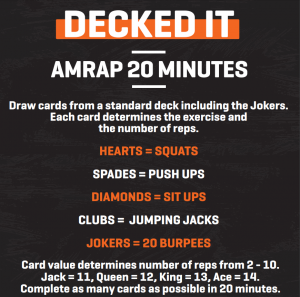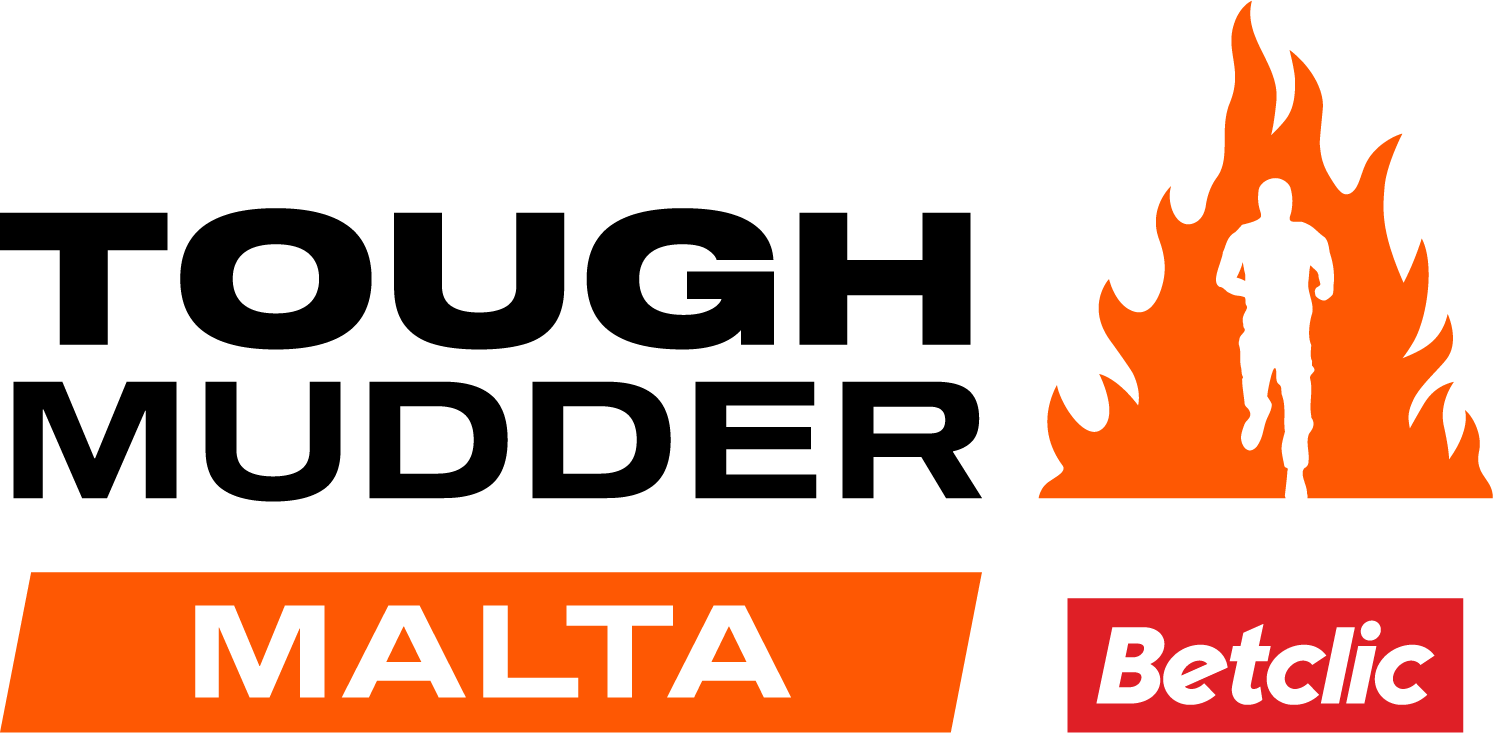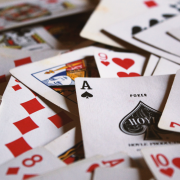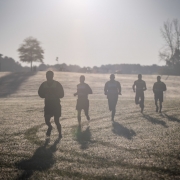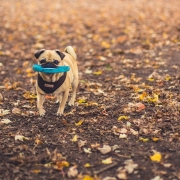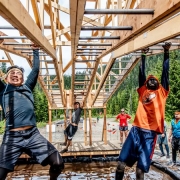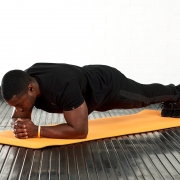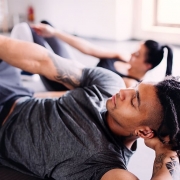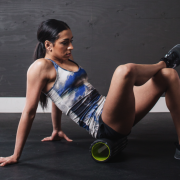As tough of a mudder as you might be, your body still needs some R&R if you want to get tougher, stronger, and faster. Neglect recovery for too long and you’ll sink into a pit of overtraining that’s harder to walk out of than a 5ft deep mud pit at mile 8.
The truth is, you don’t have to be a logging 100 miles or 10+ hours in the gym a week to get slapped in the face with overtraining. When you train you are essentially causing trauma to your body; every time you exercise you are creating micro-tears in your muscles, which grow back stronger when they repair. Without proper rest, there is not enough time for the muscles to grow back stronger.
Whether you’re gearing up for your first ever Tough Mudder 5K, training for a Tough Mudder Classic, or preparing for the World’s Toughest Mudder, it’s easy to get caught up on focusing where, when and what your next workout is going to be. But it’s possible to have too much of a good thing. Studies show that in order to prevent overtraining you must remember that rest is just as important as reps.
Here are 8 common signs and symptoms you should be on the look-out for if you’re in training:
1. YOUR RESTING HEART RATE IS ELEVATED.
Take your pulse (in Beats Per Minute-BPM) at the start of the day (after your heart rate levels out from waking to Bon Jovi’s voice blasting in your ear-about 5 to 10 minutes after waking ) to find out what’s normal for you. An elevated resting heart rate is a sign of stress, related to the imposed demand of training. If your heart rate it higher than normal, it could be because your body is pumping more oxygen to the recovering tissue in effort to heal the micro-torn muscles. As a guide, an elevated heart rate typically sits above 10 beats per minute. Doctor of Physical Therapy and Certified Strength and Conditioning Coach Dr. Grayson Wickham PT, DTD, CSCS, says 5 beats or more per minute higher than normal more than one morning in a row is a sign of overtraining.
Dr. Wickham also suggests serious Mudders keep track of their heart rate variability (HRV), which is the space and time between heartbeats. He says, “even if the BPM is the same as usual, the space between the BPM, the HRV, can be different. A low HRV is an indication that you should take a rest day, while a high HRV is a sign that your body is ready to go out and get it”. While BPM can be measured with simple counting, measuring your HRV needs to be done with a heart rate monitor, FitBit, or even a phone app like Elite HRV.
2. YOU’RE TIRED.
New-onset insomnia or common sleep disturbances are also signs of overtraining, so if you’re having a hard time falling asleep it could be because your central nervous system is overstimulated from trying to heal your damn muscles! If you don’t sleep well or long enough consistently for a few days, your reaction time, immunity, cognitive functions, and endurance will decrease, with compounds the symptoms of overtraining. Dr. Wickham says that two rest days in a row should be enough to reset the body back into a normal sleep schedule and cycle. If you’re still experiencing sleep disturbances during the second night, listen to your body and rest until your normal sleep schedule returns.
3. YOU’RE MOODY.
Whether you’re hitting the gym, walking the sidewalks on a scorching day, or preparing for a test mud-run, you may notice that your mood improves as soon as you get moving. But overtraining has the opposite effect. You’ll begin to feel mentally fatigued, as if you have a mild hangover or head cold. If overtraining happens for a prolonged period of time, it could even lead to depression due to prolonged stress on the central nervous and hormone system. However, overtraining is a gradual thing. If you’re in-tune with your body, you should realize that there are slow changes coming about (for example, a bad night of sleep or uncharacteristic moodiness), add in an extra rest day. You don’t need to fully cut your training down until you ignore these sounds for months, which is how long the symptoms of depressions take to set in.
4. YOU’RE SICK.
Regular exercise can help boost your immune system, but too much of it can compromise your health and lead to illness. The process of overtraining means your body is in a “continual catabolic state,” which lowers immunity and increases chances of coming down with a cold.
5. YOU’RE ALWAYS SORE.
Athletes and mudders tend to block out signs of fatigue thinking it will make them better, faster, stronger, tougher. And while a bit of muscle soreness is totally normal at the start of a new exercise routine, you shouldn’t be feeling constantly sore. Studies show that muscles need anywhere from 24-72 hours to recover. But if you’re still sore past the 72-hour mark, be sure to rest; this type of extended soreness is a sign your muscles aren’t recovering. Soreness is your body’s way of telling you to that it needs more energy to repair and recover. Dr. Wickham, “ DOMS (delayed onset muscle soreness) typically lasts one to three days. If you’re sore in the same muscles for a couple days (or even weeks) you’re not recovering. This could be from overtraining, or just a generally poorly programmed workout regime”. The solution for consistent soreness is to take rest days and find the recovery protocols that work best for your body.
6. YOU’VE HAD A FEW BAD WORKOUTS IN A ROW.
A “bad” workout is subjective. But if you’ve been doing the same or similar workout to what you always do, and you felt slow or weak, it’s a sign you’ve been overtraining. For example, if you regularly crank out a 9-minute mile, or 12 reps of a 20 lb bicep curl, but for some reason, you’re huffing at your usual pace, or weight, you’re in need of some rest.
7. YOU’RE NOT GETTING ANY STRONGER.
Has your body stopped changing in spite of your best efforts? If so, Dr. Wickham says you may be overtraining. “If you’ve hit a plateau and haven’t made improvements in your fitness-endurance, strength, flexibility, etc, your body needs rest.” When you’re overtraining, your body is going in the opposite direction of growth, because your muscles are torn and all you’re doing is re-tearing them again, which doesn’t give them proper time to heal and get stronger.
8. YOU FEEL THAT YOU NEED A REST DAY.
As a general rule, Dr. Wickham suggests athletes take 1-2 off days a week to recover… But he says there’s no magic formula for rest days per athlete per week. The best way to tell you need a rest day is to listen to your body. If you find you’re dreading your workout, feel worn down, or have an inclination that you might be overdoing it, take a rest day. Asking yourself these three questions is a good way to tell, too: Did you sleep for 7 hours without waking up in the middle of the night? Do you desire to train today? Are you in a good mood? If you answer “Yes” for 2 out of 3 questions, Dr. Wickham says that you’re ready to sweat.
Even for the toughest mudder, the key is to train smarter NOT harder. If you have a hard time taking time off, reframe “rest day” as “recovery day”. Your recovery day doesn’t need to be filled with pizza, Netflix, and sweatpants with your high school logo running faded down the leg; instead fill your recovery day with yoga, pilates, a light jog, a short swim, or even meditation.
